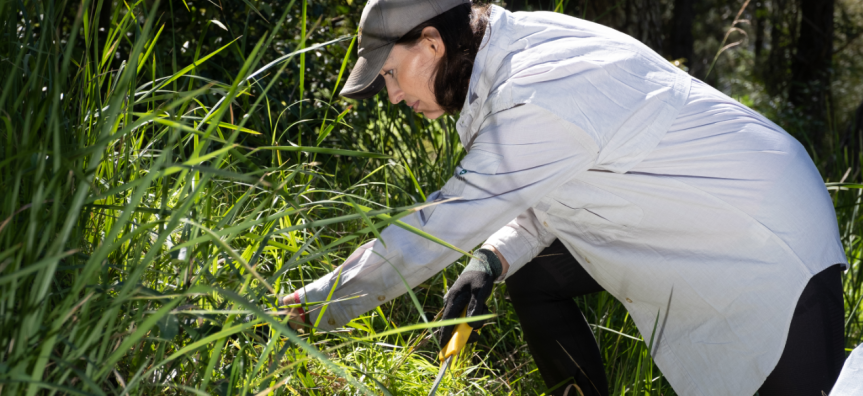
As we head into the warmer months, there is nothing better than spending more time relaxing outdoors.
But what happens when you realise that the weeds are taking over your backyard? Worse still they could be impacting your health and the environment.
Weeds often outperform our native plants reducing food sources and habitats critical to the survival of our native wildlife.
We examine seven of our more pesky weeds on the Northern Beaches and what you can do to get them under control.
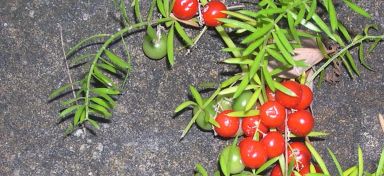
Asparagus Fern
Asparagus Fern is a multi-branched scrambler that grows along the ground, forming a dense mat of tuberous roots, with spiny branches that grow to 60cm. It produces white flowers in late summer followed by red berries.
Taking control - wear thick gloves and use secateurs to cut off the stems about 20cm above soil level. Using a knife, peter lever or mattock, cut around the crown to sever roots and water tubers that can be left to break down. Lift out the crown and place in vegetation bin.
Asthma Weed
Asthma weed (or Pellitory) is a multi-branched perennial herb that can grow up to 1m. It has sticky hairs and flowers which can cling to clothing, hair or animal fur and cause allergic respiratory reactions. It is common along road edges and cracks in walls and pavements.
Taking Control - hand weed smaller weeds while wearing protective gloves. For larger weeds, use a trowel to ensure that you remove all of the lower stems and roots. It’s best to remove the weed prior to flowering and seeding, as it is a prolific seeder.
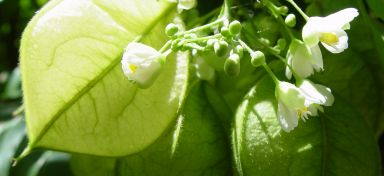
Balloon Vine
Balloon Vine is a vigorous climber with stems growing to more than 10m long. It is commonly found in wetter areas, especially along urban creeks. With light green leaves and three leaflets it has clusters of small white flowers that are followed by inflated, balloon-like papery capsules containing black seeds.
Taking control - cut the vines close to the ground and dig out as much of the root system as possible. Any remaining vines can either be removed or left to rot.
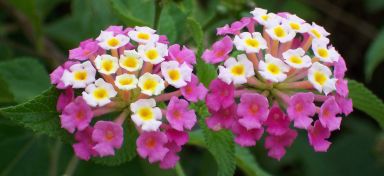
Lantana
Lantana is a fast growing shrub with brittle scrambling branches will often climb its way into trees. Its stems are square with short prickles and hairy leaves that have a distinctive smell when crushed. It flowers all year round and is followed by a cluster of black berries.
Taking control - dig out the taproot and large surface roots. Be careful, if left on the ground lantana can re-root.
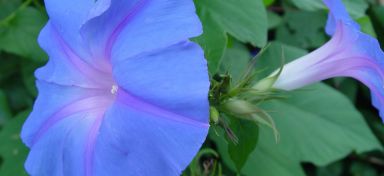
Morning Glory
Morning Glory is a vigorous, twining, climber that grows in tree canopies and forms a dense blanket over all other vegetation. It is commonly found in moist areas and has large, heart-shaped and hairy leaves with violet-blue flowers.
Taking control - cut the vines close to the ground and dig out as much of the root system as possible. The remaining vines in trees can either be removed or left on the tree to rot. Do not yank stems running along the ground as rooted fragments will snap off and grow again.
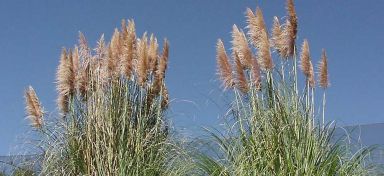
Pampas Grass
Pampas Grass is a tall tussock that grows to over 3m, it has numerous fluffy seed heads with sharp, cutting leaves that are 1-2m long. The creamy white flower heads occur in summer with each plume producing up to 100,000 seeds. Leaves contain silica which can irritate the eyes, nose, throat and lungs and are highly flammable when dry.
Taking control - The smaller plants can be hand pulled. Slash back the sharp leaves of the large tussocks before digging out the base of the plant. Place the seed heads in your green vegetation bin.
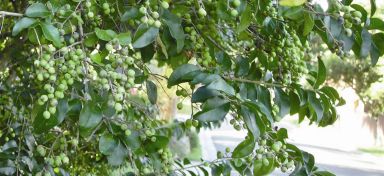
Privet
Privet comes in two types: small-leaf and large-leaf. Both are aggressive bushland invaders, as well as pests in backyards. They can trigger quite serious allergic reactions. Growing between 4 - 8m high, both produce strongly scented flowers in spring and summer which are followed by berries.
Taking control - Small to medium-sized privet plants can be dug out by hand and placed upside-down to dry out the roots. Make sure you wear gloves and some protective clothing.
Find out more about weeds and their management along with our Backyard Habitat program.
